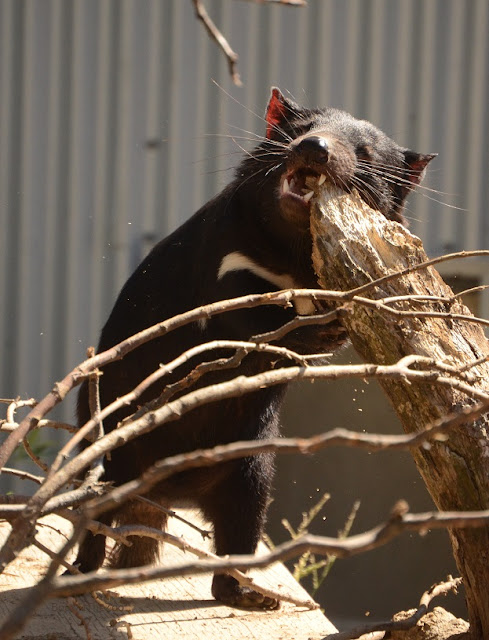A while back I posted pictures of nocturnal animals at the Columbus Zoo. I took them hand-held, and they weren't very good. For round two, on February 14, I borrowed a tripod, which permitted longer exposures without my trying to hold the camera still. In the first round, exposure times were between 0.25 and 0.125s. This time, exposure times were 1.5s except for two of the frogmouths, which were 1s and 0.67s, and the ISO was 1600. For both rounds I used autoexposure. Next time, I'll try for a lower ISO for less graininess.
I focused manually again because I didn't want to annoy the animals with the focus-assist light, although Glen wouldn't notice; autofocus doesn't work well in low light without the focus-assist light; and the range of the focus-assist light is limited, anyway. I had the wits to use the LCD screen instead of the viewfinder this time, and that helped.
In general, it's important to focus on an animal's eye or the picture won't look quite right. I found that my best pictures are of the frogmouths and binturong because of their large eyes. I focused on the reflected sparkle of light in their eyes and had some success.
 |
Matschie's tree kangaroo. This animal was quite active, which I usually love, but I needed stillness because of the long exposures. It cooperated a few times.
|
 |
Possibly a sleeping posture. The pink parts are its hind feet.
|
 |
Tawny frogmouth. I took number of photos of frogmouths because there are four of them and they didn't move, except to look at me. These birds can be brown or gray.
|
 |
Feathertail glider. This picture is awful but I included it because the animal is so interesting. It's basically a flying gecko mouse. It's the size of a mouse, has a membrane that lets it glide, and can climb glass. Standing at the glass-fronted exhibit, which holds seemingly a dozen examples, I couldn't tell you what a feathertail glider looks like. They appear out of nowhere and disappear just as quickly. It's startling when one lands on the glass with a sort of "splat" sound and then scampers up.
|






























